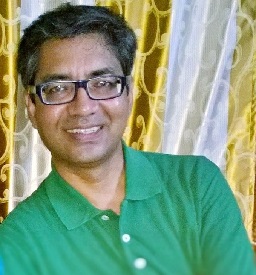


Educational Background
B. Sc.
Andhra University, India, 1987.
M. Sc. (Tech), Andhra
University, Faculty of Engineering, India, 1990.
Ph.D., 1994, Faculty of Engineering, Andhra University, India. Thesis Title: Applications of Remote Sensing, Mathematical Morphology, and Fractals to Study Certain Surface Water Bodies. (Thesis Advisors: Prof. B. S. Prakasa Rao (Andhra University College of Engineering) and Prof. S. V. L. N. Rao (IIT-Kharagpur))
Mathematical Morphology, Theoretical GIS, Spatial Information
Retrieval, Analysis, Reasoning and Modelling, Satellite Remote Sensing data
analysis, Digital Image Processing, Geocomputation, Spatial Analysis and
Geographic Information Systems, Complex geomorphic systems, Geomorphic
dynamical systems, Modelling the behavior of certain geomorphic systems via
Chaos and Bifurcation theories, Fractals and multifractals in the quantitative
analysis of certain geomorphic phenomena.
Terrestrial surfaces of Earth and Earth-like planets exhibit
variations across spatio-temporal scales. Recent advancements in remote sensing
technologies that take the advantage of wavelength bands of wide ranging
electromagnetic spectra paved a way to properly sense the
terrestrial-oceanic-atmospheric fields. Now various different satellites
provide optical and microwave remotely sensed data. Optical images are usefully
acquired by employing the solar radiation as main energy to sense the
terrestrial and/or ocean surfaces. While such optical data have limitations due
to cloud cover, microwave sensing mechanisms that are operated via backscatter
strength of the radar signal provide data that are useful under all weather
conditions. It is recently mentioned that such data that are being acquired
with huge expenditure are being underutilized. Dr. Sagar's works mainly address
the (i) feature retrieval from remotely sensed data of both the types, (ii)
analysis, (iii) reasoning and (iv) modeling phenomena that are retrieved at
multiple spatial and temporal scales. To address the four topics, which are
intertwined, Sagar's research works in the past and present involve development
of original algorithms and modeling techniques that are mainly based on
mathematical morphology, fractal geometry, and chaos theory concepts. In order
to develop models, synthetic data sets are considered. The success of the model
is further validated through testing the model on realistic data such as
remotely sensed data.